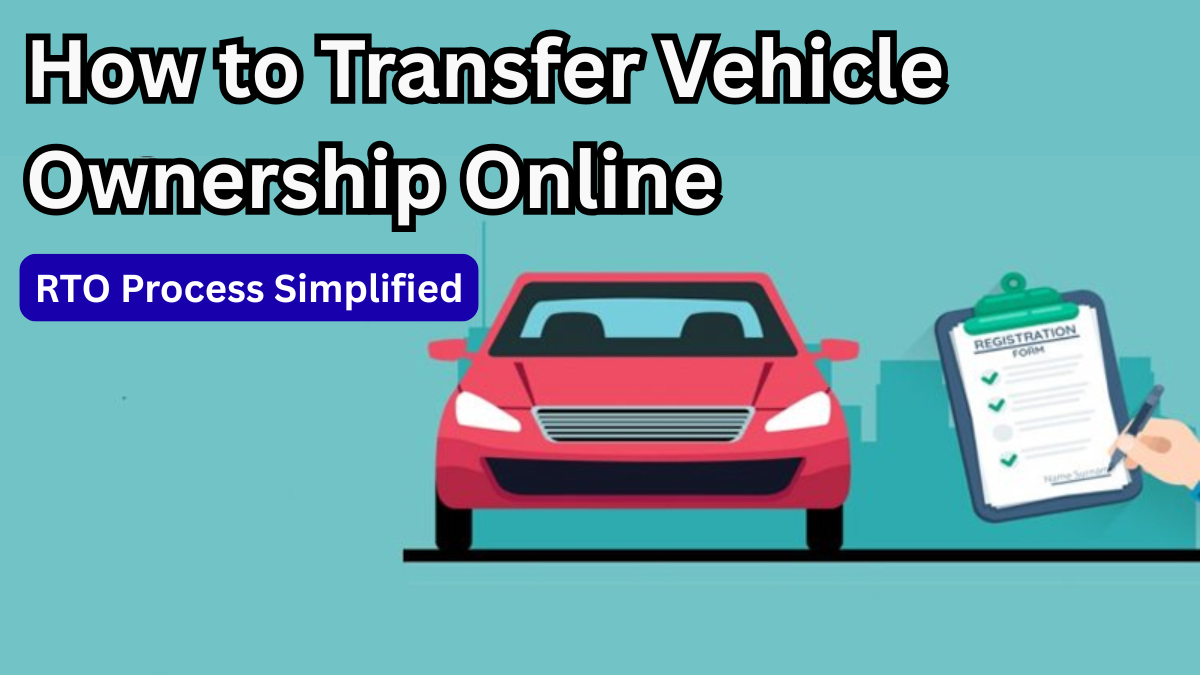Transferring vehicle ownership has become much simpler in India, thanks to digital initiatives by the Ministry of Road Transport & Highways. Whether you’re buying a used car or selling your old vehicle, understanding the vehicle ownership transfer process is crucial to avoid legal hassles and fines. This guide walks you through the RTO India online procedure for used car ownership change in 2025.

What is Vehicle Ownership Transfer?
Vehicle ownership transfer is the legal process through which ownership of a vehicle is shifted from the seller to the buyer. This ensures the new owner is officially recognized in the RTO records. Skipping this step can lead to legal trouble, including fines for traffic violations or accidents involving the vehicle.
Key points to remember:
-
Required when buying or selling a used vehicle
-
Ensures the buyer is legally responsible for the vehicle
-
Can be completed online through the RTO portal in India
Documents Required for Used Car Ownership Change
Before initiating the RTO India online process, ensure both buyer and seller have the following documents ready:
| For Seller | For Buyer |
|---|---|
| Original RC (Registration Certificate) | ID Proof (Aadhar/PAN) |
| Form 28 & Form 29 (Transfer Forms) | Address Proof |
| Pollution Under Control (PUC) Certificate | Insurance Certificate |
| Valid Insurance Copy | Form 30 (if applicable) |
| Passport-sized Photographs | Passport-sized Photographs |
| NOC from Loan Provider (if vehicle is financed) | NOC from RTO (if applicable) |
Step-by-Step Guide to Transfer Vehicle Ownership Online
The RTO India online portal has simplified the process for a used car ownership change. Here’s how to complete it:
Step 1: Log in to the Parivahan Portal
-
Visit Parivahan Sewa
-
Select “Online Services” → “Vehicle Registration” → “Ownership Transfer”
Step 2: Enter Vehicle Details
-
Input the vehicle registration number
-
The system will fetch details from the RTO database
Step 3: Fill Out Required Forms
-
Complete Form 28 & Form 29 digitally
-
Upload all necessary documents listed above
Step 4: Pay the Transfer Fee Online
-
Fees vary depending on vehicle type and state
-
Payment can be made via UPI, debit/credit card, or net banking
Step 5: Verification by RTO
-
RTO may verify documents online or request a physical inspection
-
Once verified, a confirmation SMS/email is sent
Step 6: Download Updated RC
-
After approval, the updated Registration Certificate (RC) reflecting the new owner can be downloaded
Important Points to Remember
-
Ensure all used car ownership change forms are signed by both parties
-
Transfer must be completed within 30 days of sale to avoid penalties
-
Always keep digital and physical copies of all documents
-
The RTO India online portal supports most states, but some RTOs may require in-person verification
Vertical Table: Transfer Fees Overview (Example)
| Vehicle Type | Transfer Fee (INR) | Processing Time |
|---|---|---|
| Private Car (<1000cc) | 300 | 7–10 days |
| Private Car (>1000cc) | 500 | 7–10 days |
| Two-Wheeler | 200 | 5–7 days |
| Commercial Vehicle | 1000 | 10–15 days |
FAQs on Vehicle Ownership Transfer
1. Can I transfer vehicle ownership without visiting the RTO?
Yes, the RTO India online portal allows most transfers digitally, though certain cases may require verification in person.
2. What happens if I don’t transfer ownership after selling my vehicle?
You may be liable for fines, pending traffic violations, or legal claims associated with the vehicle. Timely used car ownership change is essential.
3. How long does online vehicle ownership transfer take?
Typically, the process is completed within 7–15 days, depending on vehicle type and RTO workload.
4. Can I check the status of my vehicle ownership transfer online?
Yes, the Parivahan portal allows buyers and sellers to track vehicle ownership transfer using the vehicle registration number.
Click here to learn more
